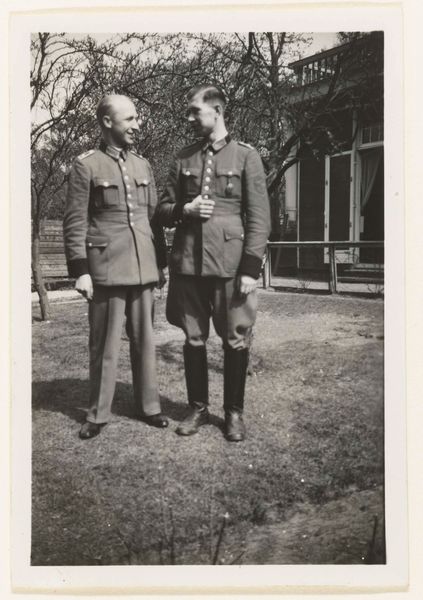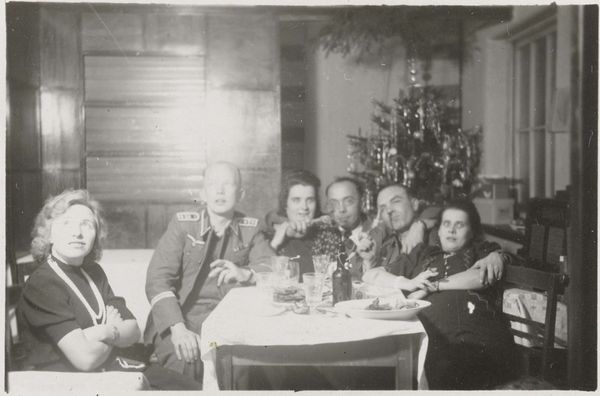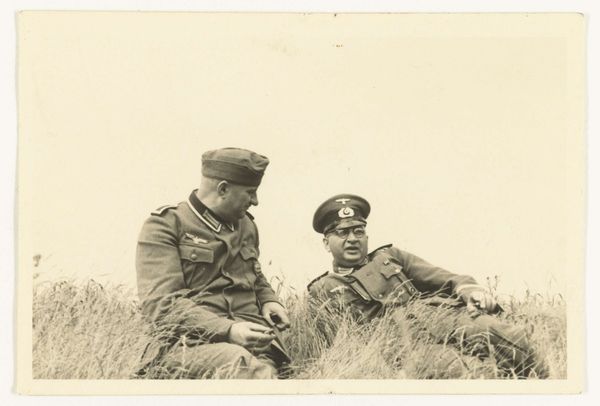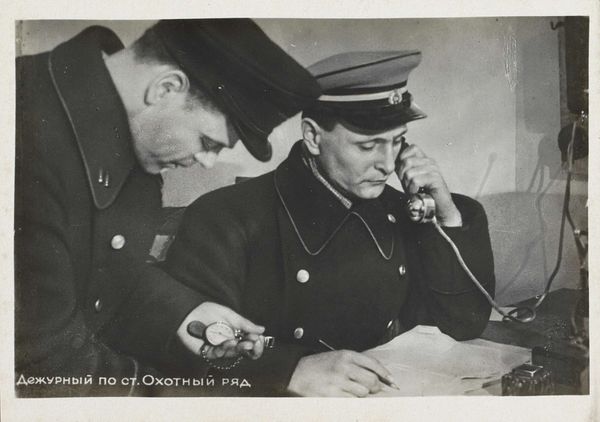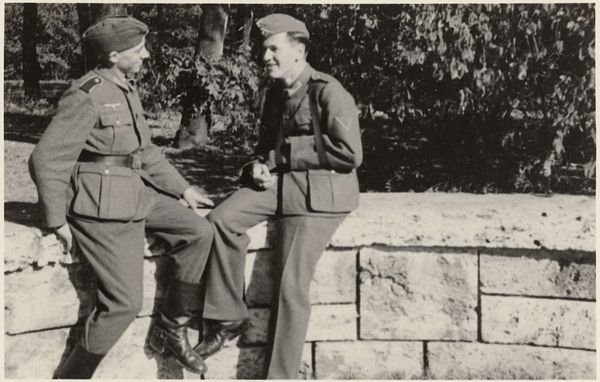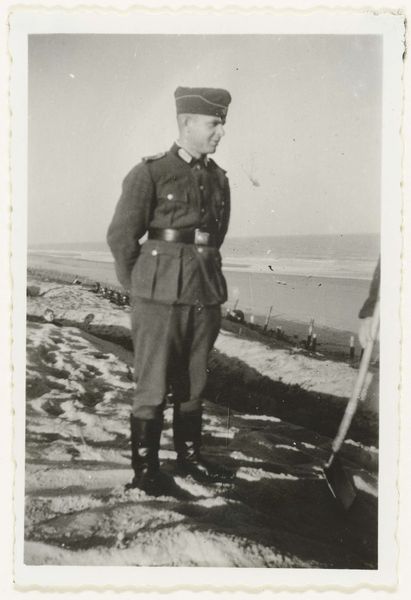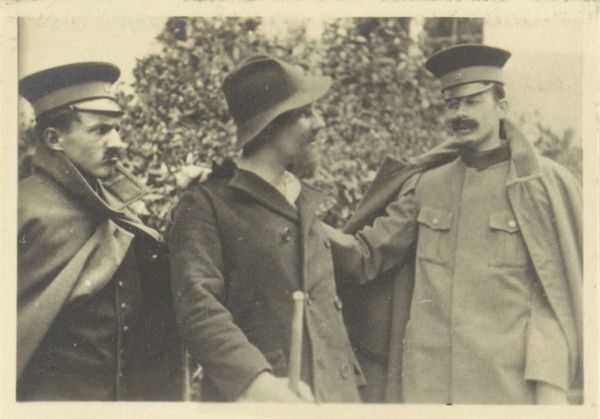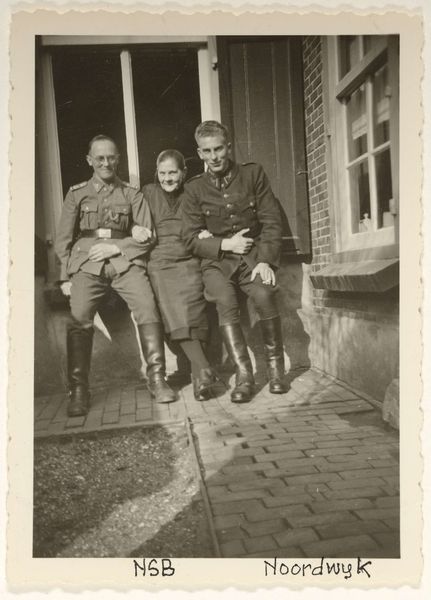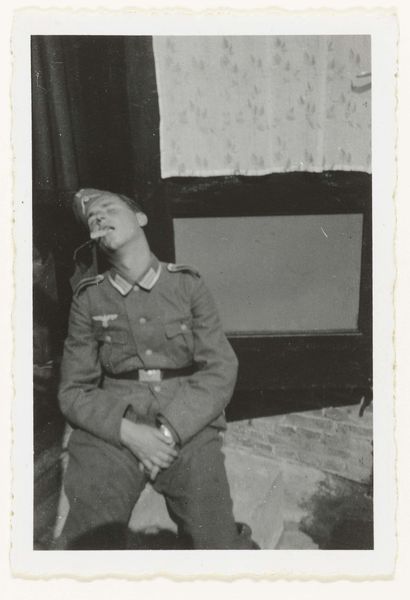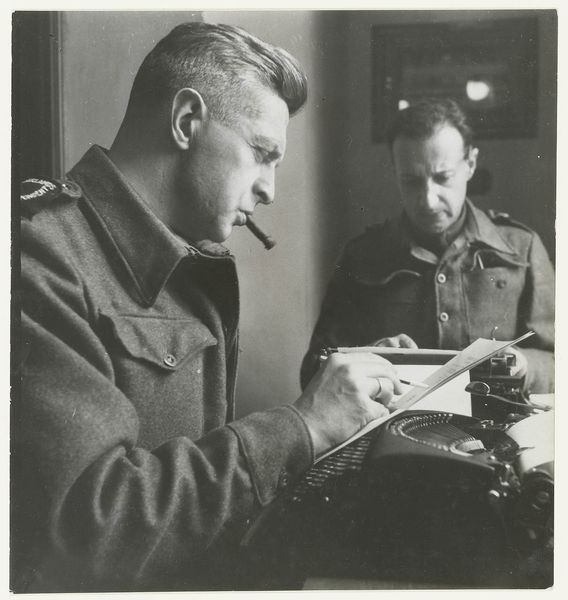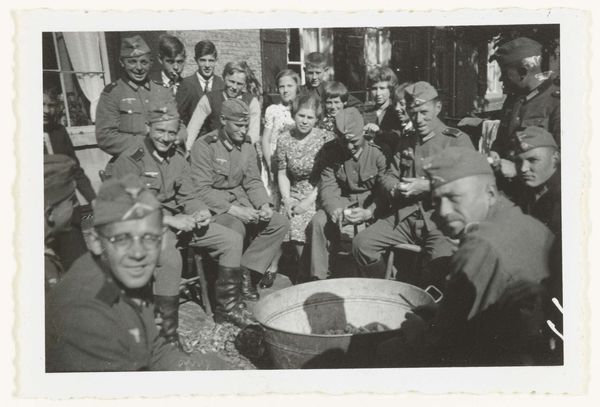
photography, gelatin-silver-print
#
portrait
#
print photography
#
photography
#
historical photography
#
gelatin-silver-print
#
history-painting
#
realism
Dimensions: height 6 cm, width 8.5 cm
Copyright: Rijks Museum: Open Domain
Curator: This gelatin-silver print, simply titled "Wehrmacht soldaten bij een kerstboom," meaning Wehrmacht Soldiers by a Christmas Tree, offers a glimpse into a very specific moment in 1943. The photograph captures two soldiers celebrating Christmas. Editor: The starkness of the monochrome and the somewhat bleak festive setting...it just feels heavy with the weight of wartime. Even the tree looks a bit sad, its decorations sparse. There's an unsettling intimacy in the close grouping of the two soldiers. Curator: It's fascinating how the artist has used the shallow depth of field to focus our attention on the soldiers’ faces. Notice the contrast between the man with the spectacles and the one who's smoking—almost a sense of vulnerability against… indulgence? Or perhaps, detachment? Editor: Indulgence yes, but let's not divorce this seemingly banal domestic scene from its brutal reality: these are members of an occupying force. How might the subjects and implied audience of this portrait engage with its propaganda function? Even at Christmas, their role is to normalize and perform dominance. Their faces—and even the melancholic tree—operate as instruments in their project of oppression. Curator: That contextual reading is valid and clearly part of the image's power, and I'd counter that there's also something profoundly human depicted, a shared moment in a time of global conflict. Look at the symmetry established by the decorated shoulders that mirror the tinsel around the branches. And also note how the slight underexposure heightens the contrast, amplifying those subtle tones of emotionality. Editor: It highlights the ways ordinary lives, and signifiers of normality such as the holiday itself, are warped under political and military power structures. Consider, for instance, the specific locality, given at the base of the print: Noordweijk, 1943. To experience peace in occupied territory can only be done by turning away, and erasing violence that allows this photograph and celebration to exist at all. Curator: So, for me, it’s the tension, the photographic skill in juxtaposing what seems domestic against such stark historical dissonance, that truly stays with you. It holds those complexities so deftly. Editor: It leaves us with much to unpack about both the intimate and the institutional violences of the war, and whose story gets told—and how.
Comments
No comments
Be the first to comment and join the conversation on the ultimate creative platform.
